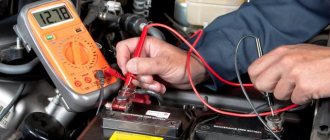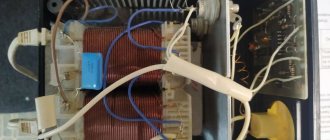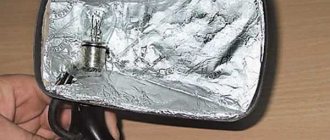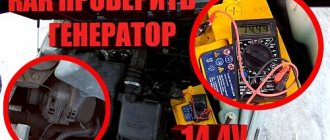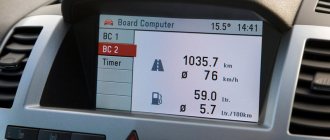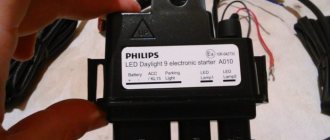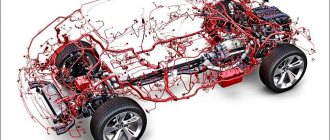A discharged battery is not a rare occurrence even for new batteries. Driver inattention, non-compliance with operating rules, equipment malfunction - there are many reasons leading to a deep battery discharge.
Therefore, even car owners with little experience often find themselves having to charge the battery using an external charger. One of the important questions that arises is whether the plugs should be unscrewed if they are present, how necessary this is, and whether this should always be done.
Which batteries need to be unscrewed?
The answer to the question of whether it is necessary to open the plugs when charging batteries depends on the type of battery:
- serviced;
- maintenance-free.
In the 2nd case, there are no traffic jams as such, so unscrewing them is relevant for drivers whose car is equipped with a serviceable battery.
Why does such a question arise at all?
Everything is also simple - when charging the battery, when the battery is already completely “saturated”, the electrolyte begins to bubble or boil, this happens in all six “banks”. Accordingly, if you charge such a battery, the seething will only intensify with each passing hour - the caps are not unscrewed, and therefore pressure is created inside, which can damage the plastic case!
However: – the cases, as usual, are designed for such pressure and can withstand even many hours of recharging; you are unlikely to recharge for more than a few hours - this can only harm the batteries.
Why is it necessary to unscrew the plugs?
Unscrewing the plugs on the battery is necessary to eliminate the possibility of its failure due to damage to the housing and subsequent explosion
. An explosion, although unlikely, is still possible - especially if the vehicle owner has an old battery that is not equipped with special holes for releasing vapors in case of overcharging.
Damage or an explosion can occur due to the fact that after the battery is fully charged and the supply voltage continues to flow, the electrolyte located in the battery banks begins to “boil”. When boiling, sulfuric acid vapors are released, which create increased pressure inside the battery. This pressure acts on the walls of the cans, which can lead to damage not only to them, but also to the battery itself as a whole.
What to do if there are no traffic jams, and why
What to do when the battery is maintenance-free? In batteries of this model, there is almost no evaporation of water, since if the electrolyte boils, it condenses in the labyrinth lid and returns to the jar. If for some reason there is a large accumulation of steam, then pressure relief valves are used to remove it.
If as a result of this the amount of liquid in the jars has decreased, then it can be replenished by making the battery serviceable. As a rule, this has to be done with cheap models that are unable to last the service life prescribed by the manufacturer.
It is first recommended to remove all stickers from the surface of the battery, as some manufacturers use them to mask plugs.
Installing plugs on battery banks is carried out as follows:
- remove the sticker from the surface of the battery;
- thoroughly clean the surface;
- round dents are clearly visible on the surface, under which there is a can;
Can locations
- in the middle of the circles we make a core using an awl;
- We use the resulting marks to drill holes with a diameter of 12 mm, since this is the size of medical plugs sold in any pharmacy;
- so that the chips formed as a result of drilling do not fall into the cavity of the can, we attach a vacuum cleaner to the battery cover using household tape;
- turn on the vacuum cleaner and drill holes;
Making holes
- a hole is obtained into which the medical plug fits tightly;
- thus, a maintenance-free battery turns into a serviceable one.
Accordingly, now you can add electrolyte to the battery and measure its density. Of course, there is no need to unscrew such covers, as they simply pull out.
In what cases is unscrewing the plugs mandatory, and in what cases is it not?
Not in all situations when charging batteries you need to unscrew the plugs. Determining the presence/absence of the need to perform the specified action depends on the following factors:
- “age” of the car battery;
- the degree of its discharge.
There are 4 main scenarios possible:
- new battery, slightly discharged;
- new battery, fully discharged;
- old battery, slightly discharged;
- old battery, completely discharged.
To determine whether the covers need to be opened when charging the battery, we recommend using the following table:
| Battery age | Discharge degree | Do I need to unscrew? |
| New | Small | If the battery is new, then there is no need to unscrew it if charging is carried out correctly (current and voltage). New batteries “boil” quite late, but it is still advisable not to “overexpose” it - the function of automatically turning off the charger when the rated voltage on the battery is reached will help with this. |
| New | Big | In this situation, you can open the lids, but it is not necessary - mainly to check the density of the electrolyte with a hydrometer |
| Old | Small | It is impossible to give an exact answer, since it all depends on how long after the battery is fully charged, the active release of sulfuric acid vapor begins |
| Old | Big | It is imperative to open all 6 plugs, since old batteries not only do not hold a charge well, but also “boil” much faster than those that have been used for a short time |
Why unscrew the plugs?
Classic batteries are subject to discharge when worn out or in severe frost. Because of this, they are unable to crank the starter and start a frozen engine. In this case, to replenish the battery capacity, you need a charger that is connected to the battery removed from the car.
Before using the charger, the filler plugs must be removed from the battery. Sometimes this is problematic, as they stick to the body over time. In this case, experienced drivers recommend using a five-ruble coin instead of a standard screwdriver so as not to damage the plug during the unscrewing process.
It is necessary to unscrew the plugs to release excess pressure that occurs during long-term operation of the battery. The electrolyte located inside the case boils when charging and releases gases, which lead to the appearance of internal pressure. If you do not unscrew the plugs, the battery may rupture.
This situation is also dangerous because toxic acid will leak out of the burst casing, which is dangerous not only to humans, but also to the environment. Indoors it can cause harm to health as it produces fumes. Some models of classic batteries have a system of protection against excess pressure - their housing contains a special valve that eliminates excess gases. However, even with such batteries it is worth removing the caps to be careful.
The procedure for unscrewing the caps of car battery cans
The process of unscrewing the plugs will depend on their type:
- protruding above the surface of the battery;
- or made as a single unit with the battery and located on the same level with it.
As a rule, there are no problems with the first type of lid. If their threads “stick”, you can take ordinary pliers or adjustable pliers and, without putting too much pressure on the lid body, turn it to the left.
But with the 2nd type of traffic jams, difficulties may arise. There are 2 ways to unscrew them:
- using a standard Phillips screwdriver;
- using a coin with a face value of 5 rubles.
The second type of cover, like the first, can “stick”, so unscrewing it with a screwdriver is not always possible. Then the method using a 5-ruble coin comes to the rescue. You need to place it in the hole in the lid and turn it to the left. If the system does not give in, you can insert a coin, hook it with pliers and then begin to unscrew it.
In all of the above situations, it is not allowed to open the lids completely - it is enough to unscrew them a little so that the gas can escape.
How to properly unscrew battery can caps
If you think that this is an elementary procedure, then this means that you simply have not encountered batteries in which the plugs do not protrude above the surface of the cover, but are hidden flush. In the first case, everything is really simple and clear, just unscrew all 6 caps sequentially. If you cannot do this by hand, you can use wide pliers or pliers. The main thing is not to overdo it with the clamp, otherwise the plastic cover may burst, and then you will have to look for a replacement.
Precautionary measures
When carrying out the above actions related to unscrewing the plugs of car batteries, the following safety principles must be observed:
- when opening the lids, you should wear protective gloves - otherwise, the acid inside the cans may get on the skin of your hands and leave chemical burns;
- The procedure for charging the battery after opening the covers should be carried out in a well-ventilated area - on the street, on a balcony or in another place where a constant flow of fresh air is provided.
Types of batteries and other useful information.
It's no secret that car batteries come in several types: lead-acid (low antimony), calcium and hybrid (in composition), as well as serviced and maintenance-free (in design features). So, the car owner can only face the dilemma of having to unscrew the plugs when it comes to serviceable standard lead batteries or hybrids, since only these plugs will be present in them.
All other options do not provide for the possibility of adding water or electrolyte, and therefore do not have special holes.
Selecting a charger
Once the motorist has figured out whether to open the plugs when charging batteries or not, care must be taken to choose an automatic charger that limits the charging current or even stops supplying power under certain conditions.
Automatic chargers will help avoid most problems associated with battery recharging.
Our editors recommend taking a closer look at the following models, which can be purchased in specialized automotive stores:
- Aurora Sprint 6;
- FUBAG MICRO 80/12;
- CTEK MXS 3.8;
- KEDR-AUTO-10;
- Orion PW-150.
Charging serviceable batteries
The situation is completely different with batteries that have been in use for a long time, and the degree of discharge is deep.
You can “revive” them by adhering to the following recommendations:
- Unscrew the plugs and check the electrolyte level, it should cover the plates completely;
- Using an aerometer, measure the density of the electrolyte, which should be 1.27 g/cm3;
- It wouldn’t hurt to check under the load cabinet - if the electrolyte is boiling in one of the cans, then we are dealing with a short circuit and the device will only have to be scrapped;
- If necessary, add only distilled water - pouring electrolyte or sulfuric acid can only be done under the supervision of an experienced battery technician who knows how to calculate the correct proportions;
- Place the battery on charge, and the load current should be one tenth of the battery capacity.
In this charging mode, the battery lasts up to 12 hours. It is quite clear that the electrolyte begins to boil at some point. There is no need to completely remove the plugs if the battery is not too old and is charged at low or medium currents. It is enough to unscrew them and put them in their place so that there are holes for the gases to escape. When trying to revive a dead battery, it is better to leave the holes completely open. It is also advisable to monitor the charging process and monitor the movement of the voltmeter and ammeter needles, which indicate the charge level.
Opinions of vehicle owners
Car owners still have fierce debates about whether it is still necessary to unscrew the battery caps, or whether nothing bad will happen even if this is not done.
Despite the fact that auto experts unanimously say that yes, it is necessary, on specialized forums you can often find quite contradictory posts. Here are examples of some of them:
- “It all depends on the charger. If you have a modern one, then the device will simply turn off and prevent the acid from boiling. Therefore, you shouldn’t bother too much with unscrewing.”
- “To determine whether you need to remove the plugs or not, you just need to inspect the battery. If there is a “hole” in the side of the lid, you don’t have to open it; if not, be sure to unscrew it!”
- “I always take pictures as a precaution. There is nothing scary or complicated in this procedure, but there will be a guarantee of safety.”
- “I used to have a maintenance-free battery, but over time the battery had to be replaced. On the advice of an auto mechanic friend, I purchased a serviced battery due to its increased service life. He also told me how to charge correctly - always with a little
- lids slightly open.”
So, if the car battery is maintenance-free, there is no need to unscrew the lids of the cans (since there are simply none).
In the case of a serviced battery, the need to open the plugs depends on the specific situation. If the battery is new and only slightly discharged, you don’t have to unscrew it, but in other cases it is recommended to do so.
When you don't need to remove the plugs
It is not necessary to unscrew the caps on new batteries whose voltage is below full charge. In this case, it is worth recharging the battery at a low current for 2-3 hours. During this time, the accumulated electrolyte vapors will not have time to escape and harm health, much less provoke a rupture of the housing.
Do not unscrew the caps during short-term charging at low current.

